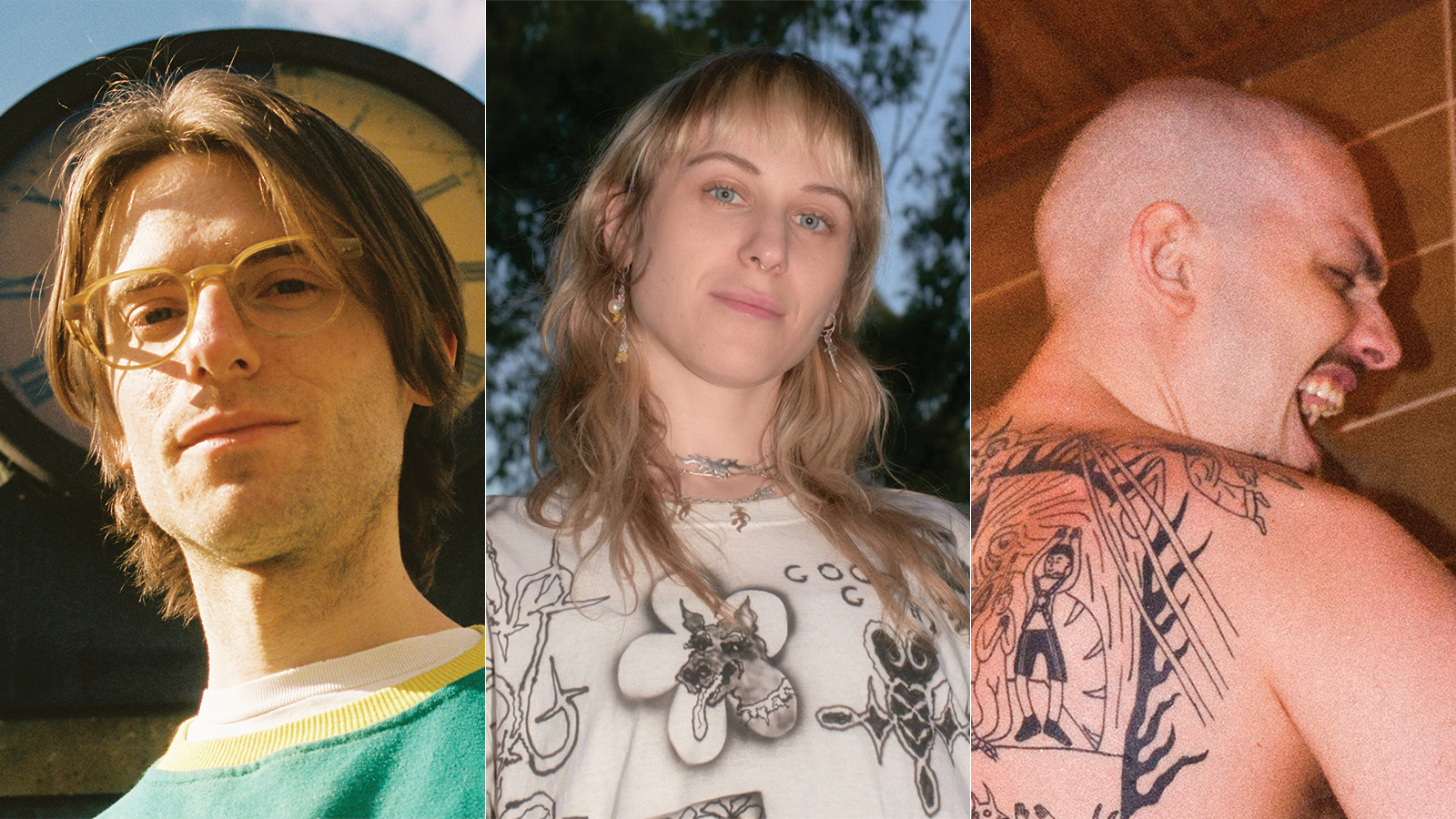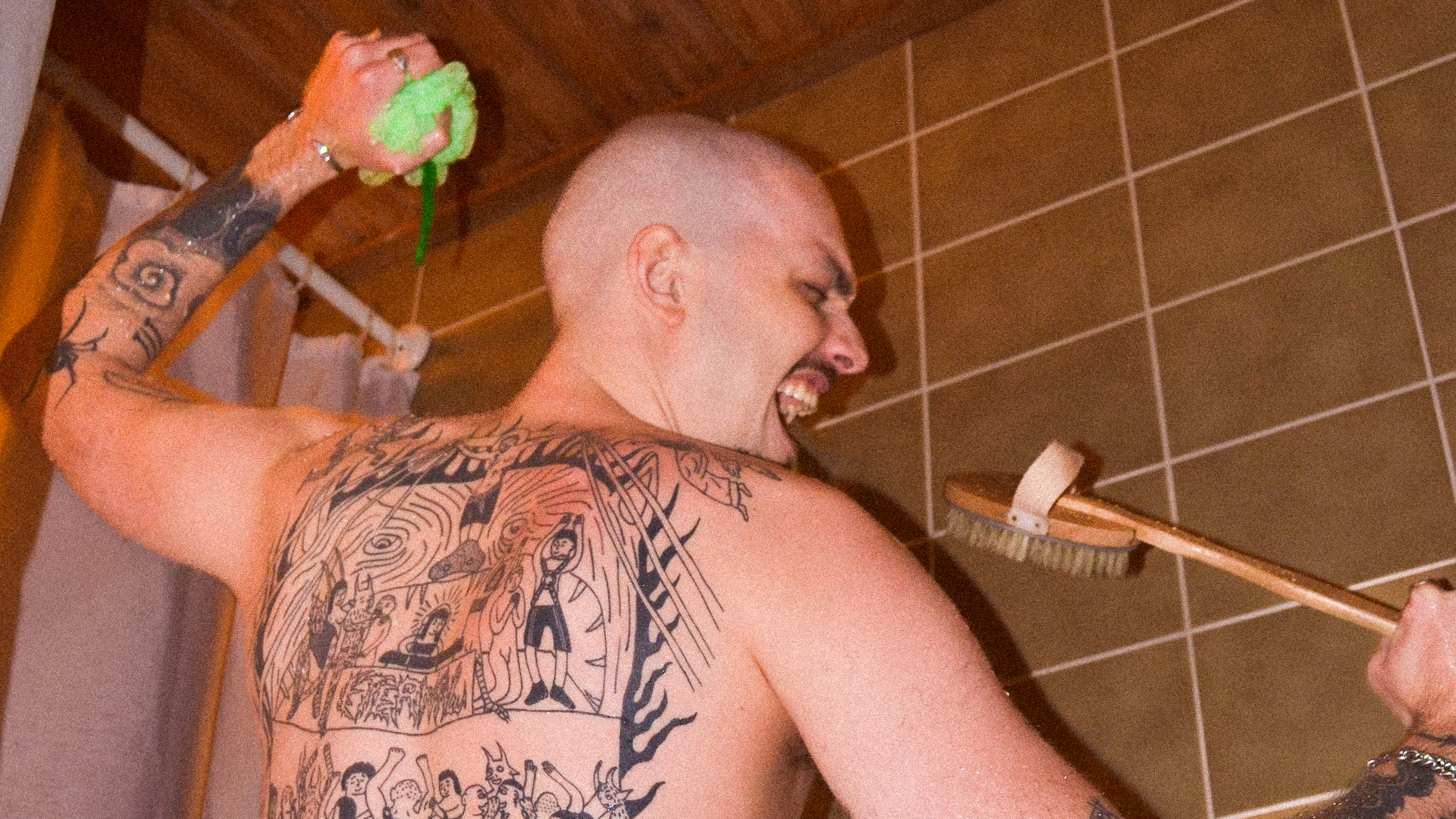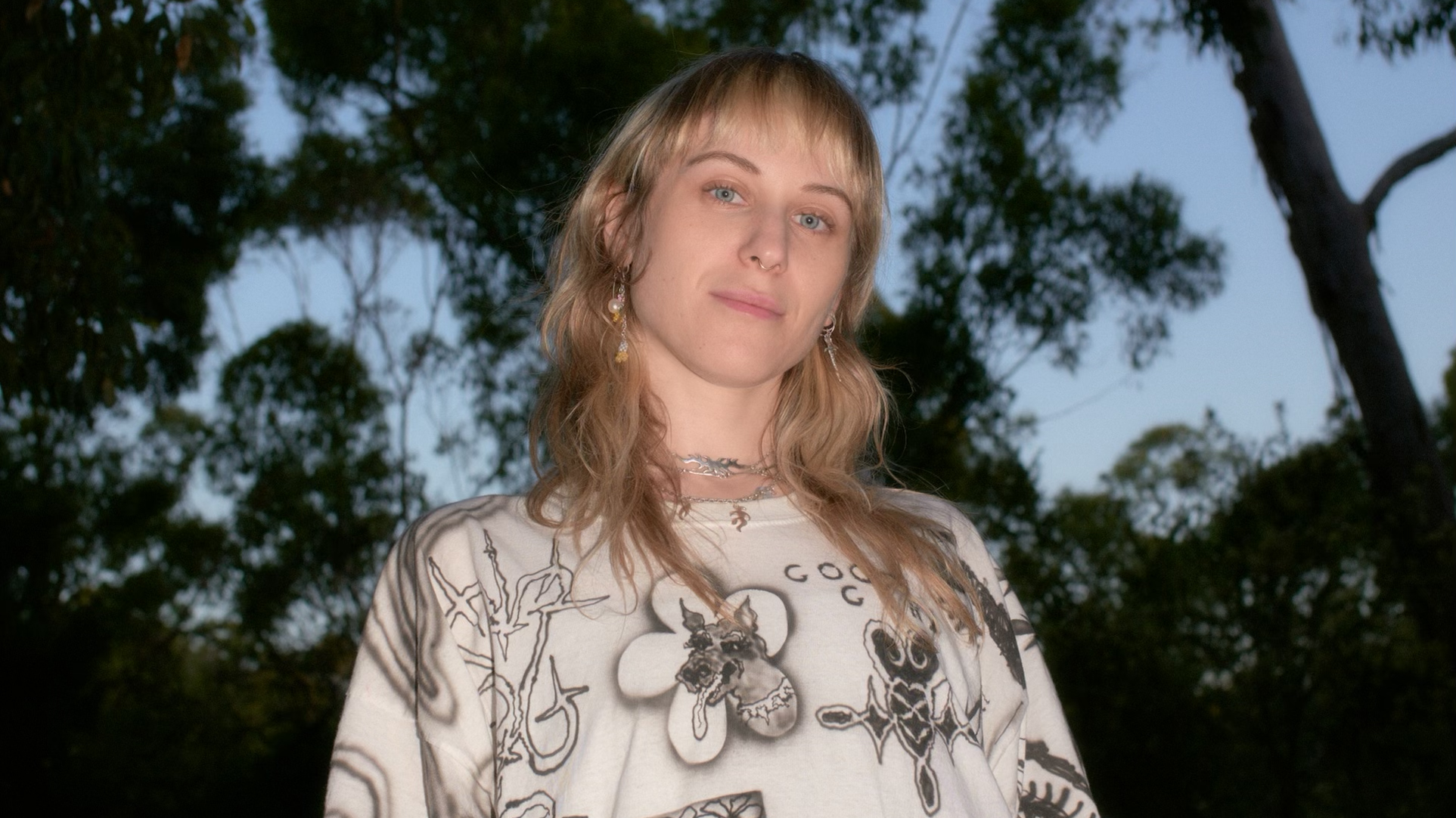
From German’s rave mecca Berghain to Dekmantel in Amsterdam, the pop edit was increasingly ubiquitous on dancefloors across the world in 2023. While the concept and its near relations - the remix, rerub and bootleg - have been around for some time, this latest creative wave has seen Rednex’s Cotton Eye Joe, Gwen Stefani, even Sheryl Crow among those artists whose songs have all been regurgitated and revved up with fresh club-ready makeovers.
Liv Meek, known as DJ and producer Regularfantasy, collaborated with DJ Chrysalis on Life in Plastic, a contemporary take on Aqua’s Barbie Girl. It proved to be one of the biggest edits of the past 12 months, and can be traced back to Liv’s formative years spent rifling through the bargain bins of her local record store.
“There was a record shop near me that had all these dollar bin house and trance vinyl records,” Liv says. “As it was the only part of the store I could afford to shop in, I would buy this music and it did shape my sound. The Barbie Girl edit came about because I had a remix of it on vinyl but the production was too cheesy and the quality of the pressing too bad to play.”
"Even if it’s some terrible kitsch cheesy track, the edit-maker hears something powerful in it and they’re trying to bring it out"
The term ‘edits’ has been used to describe these bootleg remixes and mash-ups and has racked up plenty of headlines and column inches with their artistic worth hotly debated. Despite the controversy, as with Liv’s approach to her material, their creation often comes from a pure source where notions of good or bad are blurred and wholly subjective. Instead, what’s obvious is a real passion for the original. If it’s not there, then the edit likely won’t work as a reconstructed piece of music.
“Ironic edits (where you think the source song is shit and you’re basically mashing it up for a joke) are good for a laugh, and I’m glad there are people that make them,” says producer Angus Finlayson, the man behind the edit-making alias of STRIPE N CO. “But, to me, the most powerful edits display a genuine love for the source material. Even if it’s some terrible kitsch cheesy track, the edit-maker hears something powerful in it and they’re trying to bring it out.”

To edit or not to edit?
So why have edits taken up so much online bandwidth and conversation over the last 12 months? German producer Skee Mask stirred things up in August 2023 by tweeting: “Underground music festival and 95% of the line up is dropping some commercial bullshit mashup edit of whatever songs they heard on the radio when they were still shitting their pants.”
Viral video clips of Amsterdam’s Dekmantel showed pop edits lighting up its various stages while Resident Advisor reported on the Horst Festival where “club-friendly takes on Mariah Carey, Nelly Furtado [and] Geri Halliwell” were all rinsed.
"To me the songs I chose are quite powerful even if they are also pretty cheesy. There’s something in the songwriting/melodies"
Queer Black artist LSDXOXO was quoted in a Crack Magazine cover story as saying, “pop vocals are literally my thing”. Naysayers and critics have claimed that these edits are cheapening sacred dancefloors that they deem should be protected from such commercial sounds.
Initially leading a creative life as Minor Science, inspired more by the leftfield sounds of Planet Mu, Venetian Snares, early dubstep and the electronics of the Hessle Audio label, Angus’ STRIPE N CO guise came about during the pandemic. He wanted to explore the “diluted nu metal” of Evanescence and Linkin Park he loved as a pre-teen.
“I’m obviously not the only person who’s done this either, but it felt like slightly less well-worn terrain,” he explains of the project’s origins. “To me the songs I chose are quite powerful even if they are also pretty cheesy. There’s something in the songwriting/melodies. I can only do edits of songs that I feel drawn to in this way. I’m not that into fully “ironic” edits that clearly have no love for the source material.”
From Anastacia to Barbie Girl
Dissolver, real name Wessel Vlemmings, is a techno producer from the Netherlands whose reworking of Anastacia's I’m Outta Love came after years of experimentation with various sounds and styles. Initially, his musical evolution began through experiments with FL Studio and trying to produce his own take on house music while inspiration for tackling Anastacia’s hit came through his social circle.
“We were hanging out and looking through my friend’s playlist trying to find a fun song for an edit when the track came on,” he says. “It was kind of an eureka moment, this track has the perfect level of nostalgia and catchiness to make a great edit of. So after an hour of tediously slicing the whole vocal perfectly to the grid I was ready to build around it. And as always with the best ideas, this track was almost fully done an hour later.”

A quality original song or production, then sourcing a decent a capella vocal are what Wessel looks for when laying the foundations of an edit. Then it’s down to the creator to steer the new version wherever they want to head.
"I personally always choose to not have a lot of elements in my tracks, which lets the listener hear everything that is going on"
“When you have those elements set, you’re already halfway there,” he says. “Then it’s just a matter of letting your own creativity flow over the a capella. I personally always choose to not have a lot of elements in my tracks, which lets the listener hear everything that is going on, and also makes it perfectly playable in a live audio context. But that’s just personal preference in the end.”
Liv Meek met DJ Chrysalis (real name Chris Ellis) while she was at a music festival in Australia. After a weekend spent raving together, he suffered an unfortunate accident as he was leaving the festival which led to their collaboration.
“Chris ended up getting accidentally shot by a farmer at the end of the festival as he was driving home,” she says. “The shot went so far that it went across the field, through the door of his car and into his arm and slightly into his chest. It was crazy, there was a lockdown at the festival.”
Unsurprisingly, Chris was unable to work in his day job as he recovered but he was able to get in the studio. So while he was on the mend, the pair got together and, as Liv says, “got all this time to be creative because of this insane instance”. Their Life in Plastic edit was born out of this period but wasn’t without its challenges.
“We took the track, dropped it into Ableton and it split everything into these different parts,” she says. “I’ve never discovered this function since then - I’m not sure if hallucinated it or not but it took the song, and created MIDI parts of every element. We ended up with this insane Ableton version and had to work through multiple bounces to get it right.”

“Ultimately though, I knew it was possible to make something great with it,” Liv continues. “I have a list of songs in my mind that I want to do and that’s been on my mind for about a decade.”
Chris added: “I can't say for sure why Life in Plastic has resonated, I find it the hardest track that I have done with Liv to like as, in my mind, I overworked it a bit. Still, one of the interesting things about making music is that everyone hears it differently and you can't pick which song will be received well and which won't.”
The creative process
All four producers adopt slightly different approaches to their edit productions although they are united in their love of Ableton. Wessel usually begins with a certain sound, loop or vocal that has pricked his interest before getting stuck into refining each part.
“I then load any sounds I like into my Akai Force and build a low quality loop arrangement around that using sonically fitting samples from my sample bank,” he explains. “Afterwards I record the raw loops back into Ableton (add some extra sounds using VSTs if necessary) and do the mixing and final arrangement. For my live set, I then export the loops back into my Force and replace the raw ones, while also implementing some of the adjustments on the arrangement.”
He continues: “I have tried stem separation software to isolate vocals of certain tracks but last time I used it, it wasn’t at a level where I was satisfied with the results.”
"With something like my Kylie Minogue x Psytrance track, I tend to start with generic sounds and motifs that are commonly used in the genre/s in question"
Angus works mostly in-the-box with Ableton as his DAW and an arsenal of samples and presets to plunder. Many of his edits start life with an aim to bring two contrasting styles and sounds together. “For example, with something like my Kylie Minogue x Psytrance track, I tend to start with generic sounds and motifs that are commonly used in the genre/s in question,” he explains.
“The idea is that the ‘spark’ comes from the collision implied in the initial idea (as in: Kylie colliding with psytrance), so I don’t need to be super original in the execution. When I’m making original tracks (i.e. not edits) I feel a bit more pressure to be more creative with sounds and processes.”
Angus has a clear differentiation in the way he makes his edits and how he draws up his original tracks. Whereas with his own artist material, he spends more time experimenting, he feels having a clear ambition is the best way to bring an edit to life.
"When choosing a song to edit, I’m always thinking about what genre it could be spliced with or how it could be flipped into something surprising or entertaining"
“When choosing a song to edit, I’m always thinking about what genre it could be spliced with or how it could be flipped into something surprising or entertaining,” he says. “The initial idea is the hardest thing to find. Once it’s there, the track kind of makes itself.”
Producers should also acknowledge the constraints implied by their source material, including tempo and what they are working from too - either the full mastered version or an a capella.
“Consider the practicals,” Angus advises. “If it’s 100bpm, it’s probably gonna sound too chipmunked if you try to turn it into a 160bpm breakbeat hardcore track. If you have the full master, are there sections where the parts you want to sample (such as the vocals, bassline, or drums) play in isolation? If not, you might not be able to get very far with an edit. Also, make it good. Even if your edit is intended as a joke, it will be better if you execute the joke well.”
A seat at the table
The clubbing landscape has ebbed and flowed since the pandemic lockdown’s eased with different styles and sounds coming to the fore. Although the edit conversation ramped up in volume in 2023, many of the music makers have been involved in crafting these sounds for some time.
“I think edits are like a conversation through eras and genres, a response to the times and needs of the dancefloor,” says Livia. “They're sort of like memes but in a good way, I like how they can play off of each other in different musical styles. I also think they can add the right amount of nostalgia, which is what I’m all about. I like when you can’t really figure out the era of music.”
At the moment, there certainly seems to be a thirst for faster, harder and sillier music than before, perhaps inspired by the need for more throwaway and comforting sounds in what has been a dark few years in terms of world events. The club has always been about finding a release and today we need it more than ever.
"I’ve always loved silly music and I’m happy it’s getting its seat at the table"
“The Covid-enforced break led people to question a bunch of norms around authenticity, seriousness - and when they came to clubs back they wanted instant gratification,” says Angus. “A lot of the stylistic directions that were set up in 2020/21 are still being developed now. I think that’s broadly good: I’ve always loved silly music and I’m happy it’s getting its seat at the table.”
But, as some critics have pointed out, is this lust for recycling older tunes a bad thing? At least in terms of creativity and artistic credibility? As Angus says, these edits offer a sense of comfort and familiarity for ravers.

“There is sometimes a whiff of desperation to the grinning OTT escapism of contemporary club music,” he says. “Edits of familiar tunes are a safe sell. They’re also great for generating those ecstatic crowd reaction vids that play so well on IG/TikTok.”
Wessel agrees that the recognisability of an edit is an important part of their popularity, particularly when it suddenly appears in a new context.
“I just think a lot of producers now acknowledge the magic of creating a unique edit, of breathing new life into an existing track to make it playable in a different environment than originally intended,” he explains. “It has something special, where you suddenly get people singing along and remembering that moment.”







